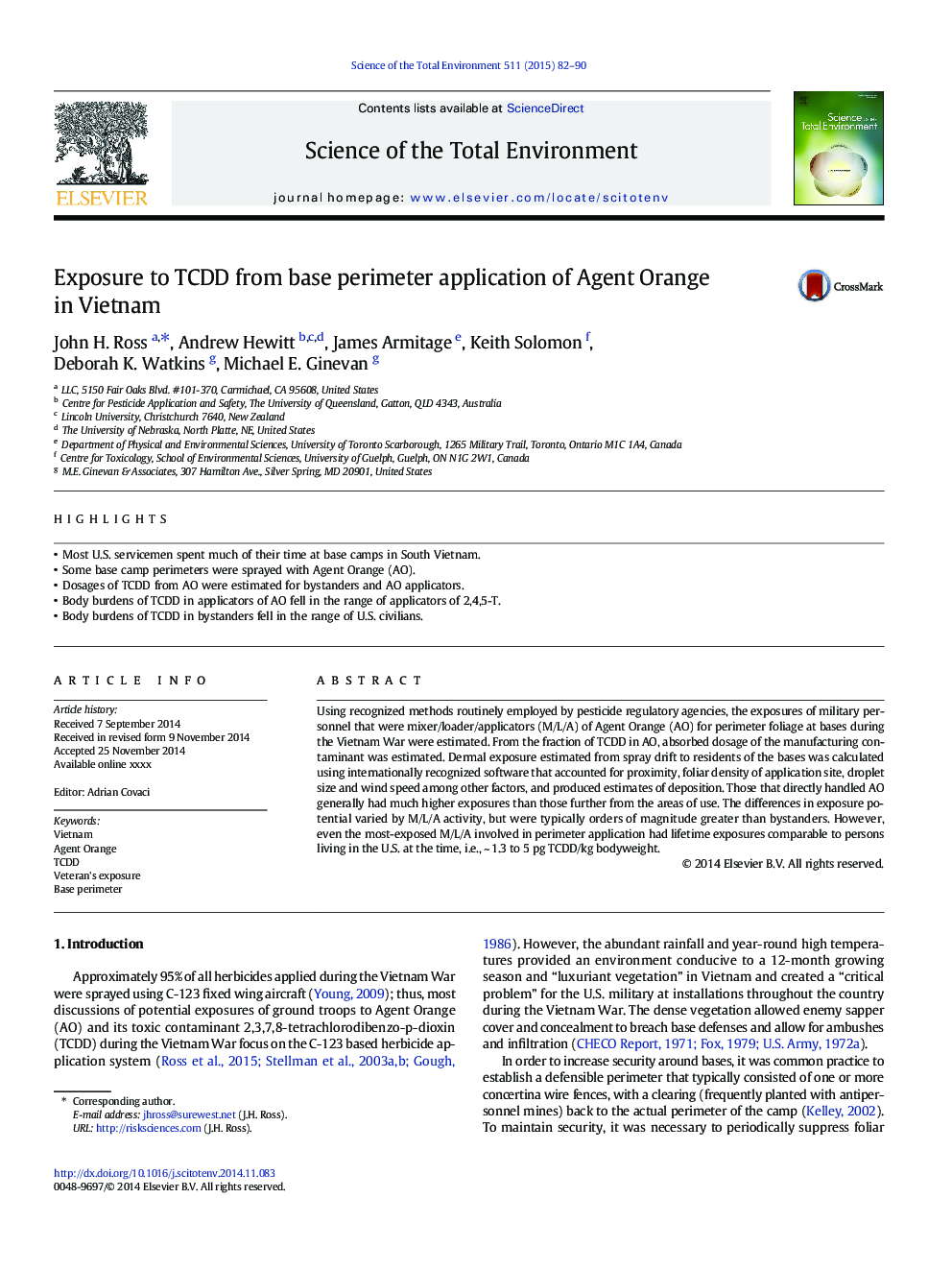| Article ID | Journal | Published Year | Pages | File Type |
|---|---|---|---|---|
| 6327410 | Science of The Total Environment | 2015 | 9 Pages |
Abstract
Using recognized methods routinely employed by pesticide regulatory agencies, the exposures of military personnel that were mixer/loader/applicators (M/L/A) of Agent Orange (AO) for perimeter foliage at bases during the Vietnam War were estimated. From the fraction of TCDD in AO, absorbed dosage of the manufacturing contaminant was estimated. Dermal exposure estimated from spray drift to residents of the bases was calculated using internationally recognized software that accounted for proximity, foliar density of application site, droplet size and wind speed among other factors, and produced estimates of deposition. Those that directly handled AO generally had much higher exposures than those further from the areas of use. The differences in exposure potential varied by M/L/A activity, but were typically orders of magnitude greater than bystanders. However, even the most-exposed M/L/A involved in perimeter application had lifetime exposures comparable to persons living in the U.S. at the time, i.e., ~Â 1.3 to 5Â pg TCDD/kg bodyweight.
Keywords
Related Topics
Life Sciences
Environmental Science
Environmental Chemistry
Authors
John H. Ross, Andrew Hewitt, James Armitage, Keith Solomon, Deborah K. Watkins, Michael E. Ginevan,
